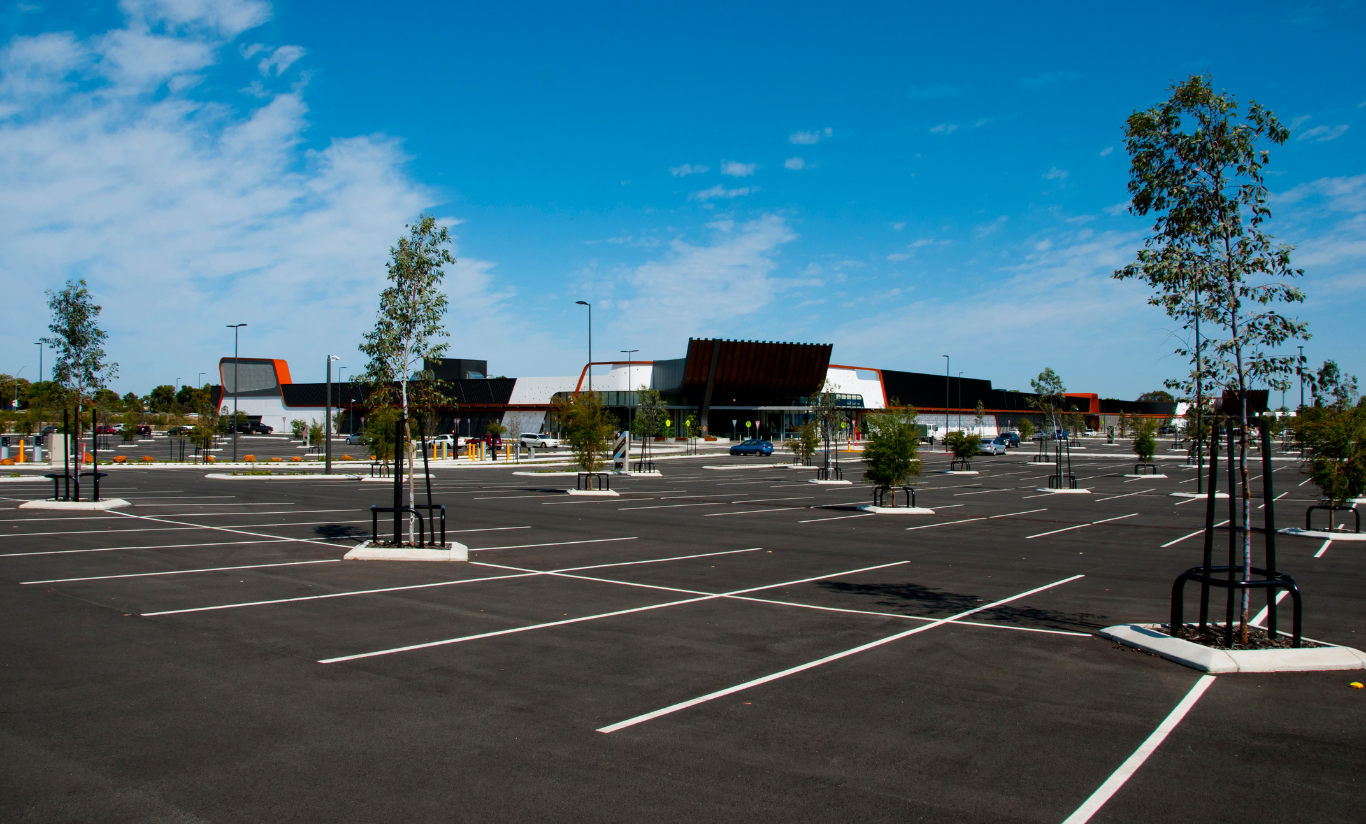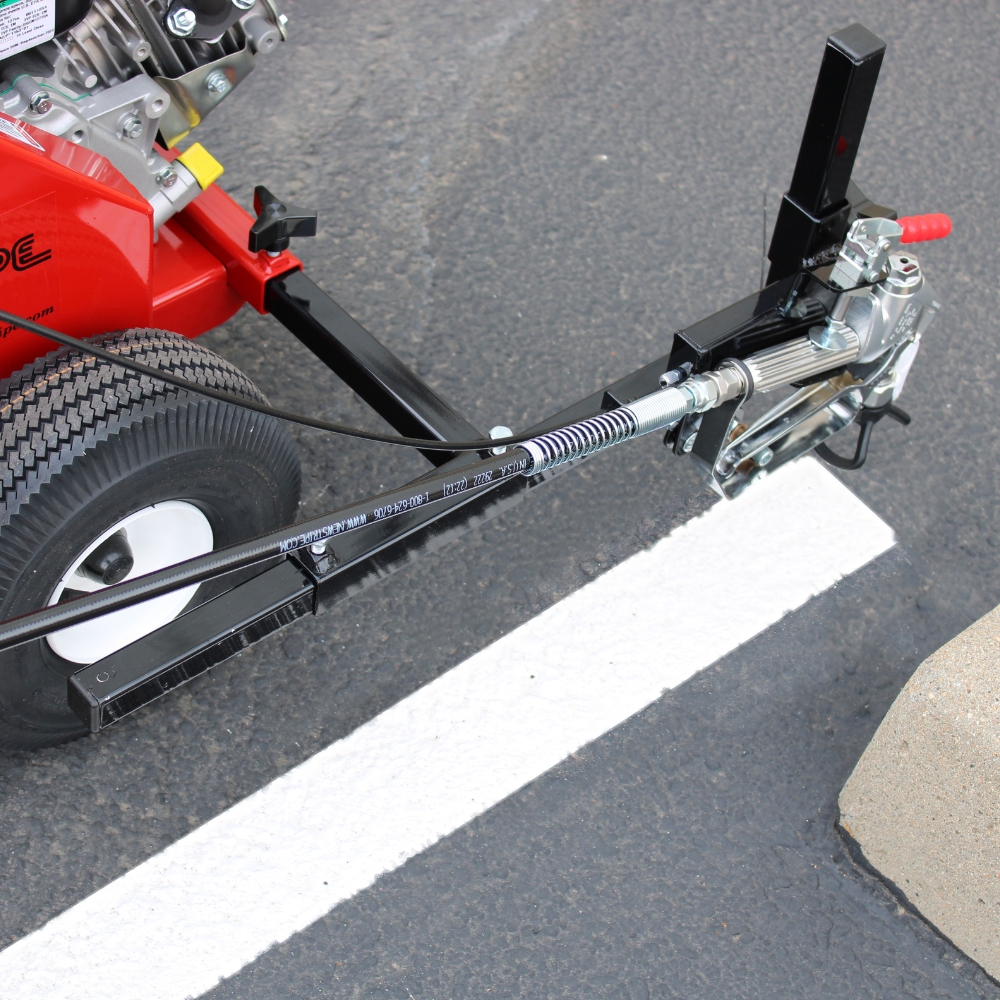
When it comes to parking lot striping, there’s no better way to achieve crisp, professional results than pairing the industrial‑grade Newstripe 4250 Airless Striping Machine with precision PolyTough handicap stencils and parking lot line stencils. This trifecta offers unmatched efficiency, compliance, and visual appeal to make it the ultimate choice for property managers, contractors, and maintenance teams.
1. Why Quality Equipment Matters in Parking Lot Striping
Your equipment is the backbone of parking lot striping. The Newstripe 4250 Airless Striping Machine delivers smooth, even line application with minimal overspray and clogging to ensure a precise finish that outperforms traditional spray or roller methods. Newstripe engineered this machine to maintain consistent pressure, which means every pull of the trigger lays down clean, bold lines.
Combine that with the durable PolyTough handicap stencil and versatile parking lot line stencil, and you’ll create accessible, organized, and compliant parking spaces in half the time without sacrificing professional quality.
2. The Machine—Newstripe’s 4250 Airless Striping Machine
The 4250 Airless Striping Machine is purpose‑built for heavy‑duty parking lot striping and marking. The key advantages include:
- High‑pressure airless spray technology: ensures uniform paint coverage.
- Works with water-based and oil/solvent-based paints
- Adjustable Dual Position Spray Gun Mount (8″ in front of wheels or next to front wheels)
- Suitable for large areas and long runs, dramatically speeding up line layout.
- Durable construction built for repeated, professional use.
The efficiency of the 4250 Airless ensures you can stripe more lot area in less time, crucial for property owners and managers aiming to maintain neat, safe lots with minimal downtime.
3. The Essentials—Handicap & Parking Lot Stencils
Modern parking lot striping must meet ADA standards and clearly define driving lanes, stalls, and accessible spaces. That’s where stencils come in:
- Handicap Symbol Stencil: This long‑lasting PloyTough stencil ensures consistent, compliant wheelchair logo placement—essential for both safety and legal compliance.
- Parking Lot Line Stencil: The perfect complement for straight and even stall lines—delivering repeatable precision and layout accuracy.
These PolyTought stencils, used with the 4250 machine, guarantee professional, code‑compliant, and visually appealing lot striping. Plus, all PolyTough stencils come with a lifetime warranty.
4. Why This Combo Is the Best for Parking Lot Striping
Speed, Precision, Compliance
The 4250 machine’s airless spraying ensures fast, clean application with no drips or fuzz. Delivering sharp, clean 2″ to 6″ wide lines every time. Adding the stencils gives you fault‑free ADA symbols and customizable layouts. Together, it’s a system designed for modern parking lot striping needs.
Durability and Consistency
High‑quality equipment and durable PolyTought stencils mean more durable markings that stay vibrant longer. This directly impacts how frequently you need to touch up or re-stripe your lot.
Cost-Effectiveness
Though the initial investment may be higher than using cheap equipment, the longer lifespan of both machine and stencils, plus faster jobs, drive down long‑term costs, and reduce business disruptions.
5. Refresh Schedule: How Often Should You Restripe or Touch Up?
Even the best parking lot striping fades over time, and knowing when to refresh is essential for safety and compliance. Here’s what industry guidelines say:
- Most sources recommend restriping or touch‑ups every 12 to 24 months, with variations based on traffic volume and conditions.
- A recent breakdown suggests:
- High‑traffic lots: every 12 months
- Moderate‑traffic lots: every 18–24 months
- Low‑traffic lots: every 2–3 years.
- Most lots need restriping every 1–2 years, taking into account traffic and environmental wear.

Best practice: Inspect after 12 months. If lines are noticeably faded, crack, or ADA symbols are losing visibility, schedule parking lot striping refreshes promptly to avoid safety risks or fines.
6. Combining the 4250 + Stencils with a Smart Maintenance Plan
Here’s how to maximize your return on the 4250 Airless Striping Machine and stencils:
- Initial Layout: Clean and prep the surface. Use the machine with stencils for crisp, compliant layout.
- Regular Inspections: Evaluate striping every 6–12 months—especially after high‑traffic seasons or extreme weather.
- Touch‑Ups vs. Full Restriping:
- For minor fading, use the 4250 Airless Striper and PolyTough stencils for quick touch‑ups.
- For widespread wear or post‑sealcoat, perform a full parking lot striping refresh.
- Synchronize Maintenance: Align striping with sealcoating or crack sealing schedules for efficiency and better adhesion. Follow Colorado seasonality for optimal temperature, sun exposure, and weather for best results.
- Check Regulations: Ensure that ADA, fire lane, and local codes are met—especially as laws can evolve. The use of high‑precision stencils helps ensure compliance.
7. Example Maintenance Timeline
| Time Frame | Action | Benefit |
|---|---|---|
| Month 0 | New layout using 4250 Airless + PolyTough stencils | Clean, compliant, professional appearance |
| Month 12 | Inspect lines for fading, especially symbols | Early detection of wear |
| Month 12–18 | Touch up or restripe as needed | Maintains visibility and compliance |
| Month 18–24 | Full restripe (if fading is widespread) | Full refresh for safety and aesthetics |
| Every 2–3 years | Coordinate with sealcoating or resurfacing | Long-lasting, cost-effective maintenance cycle |
Using the 4250 Airless Striping Machine, handicap stencil, and line stencil, you’ll have the tools to make each step efficient and visually sharp.
8. Final Thoughts: Elevate Your Parking Lot Striping
In sum, when you pair Newstripe’s 4250 Airless Striping Machine with the PolyTought handicap stencil and parking lot line stencil, you’ve crafted the perfect system for parking lot striping that is:
- Efficient—fastest application in its class
- Accurate—clean, straight lines and perfectly placed symbols
- Durable—high-quality construction resists wear
- Compliant—ADA and layout rules met with precision
- Cost‑effective—longer lasting than lower-grade tools and easier to maintain
Backed by industry‑validated guidance that striping should be reviewed annually and restriped every 12–24 months (or sooner for high-traffic areas), this trio empowers property managers and contractors to stay ahead of wear while maximizing safety, curb appeal, and regulatory compliance.
